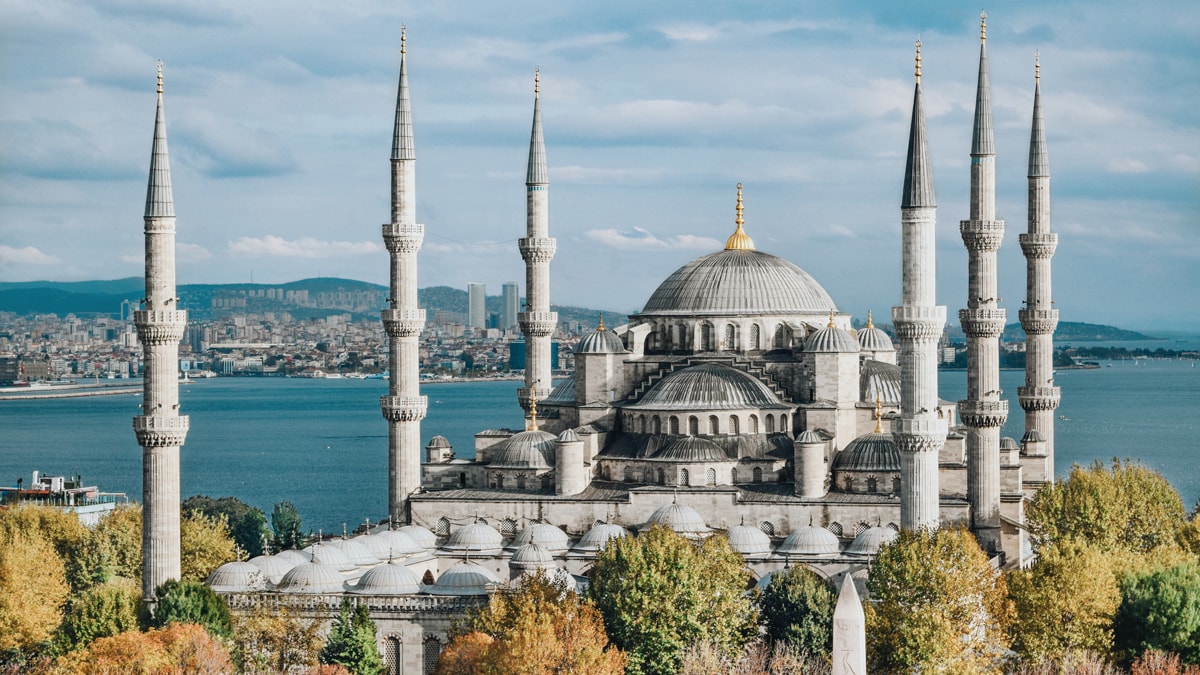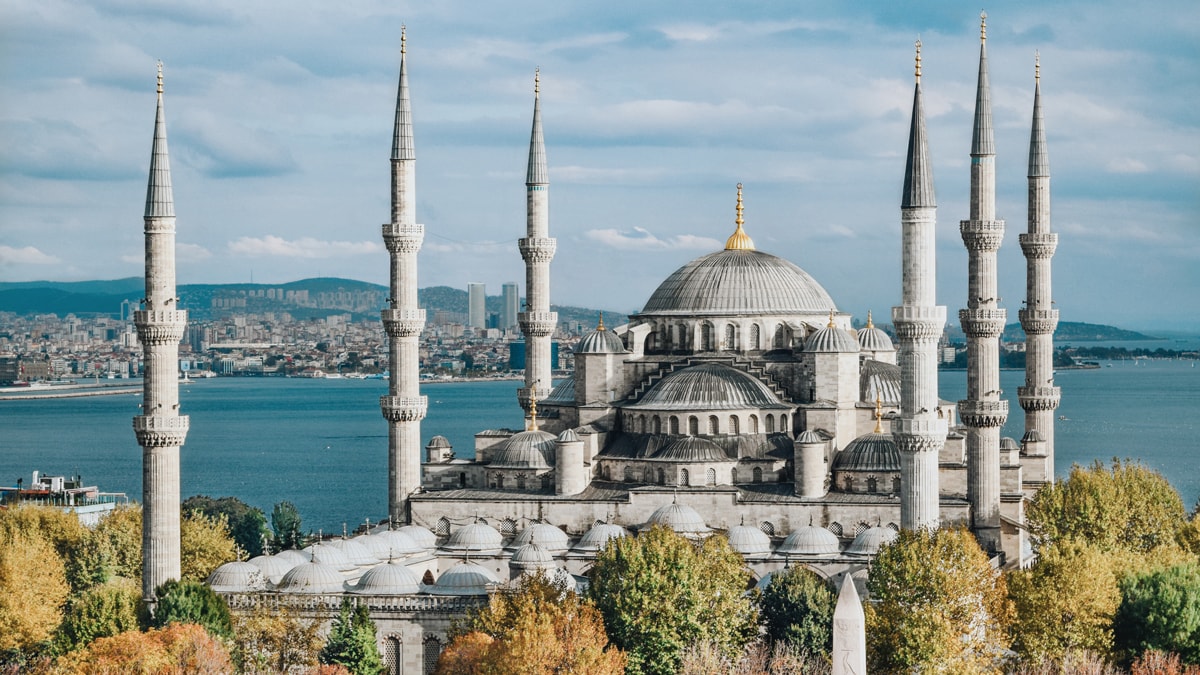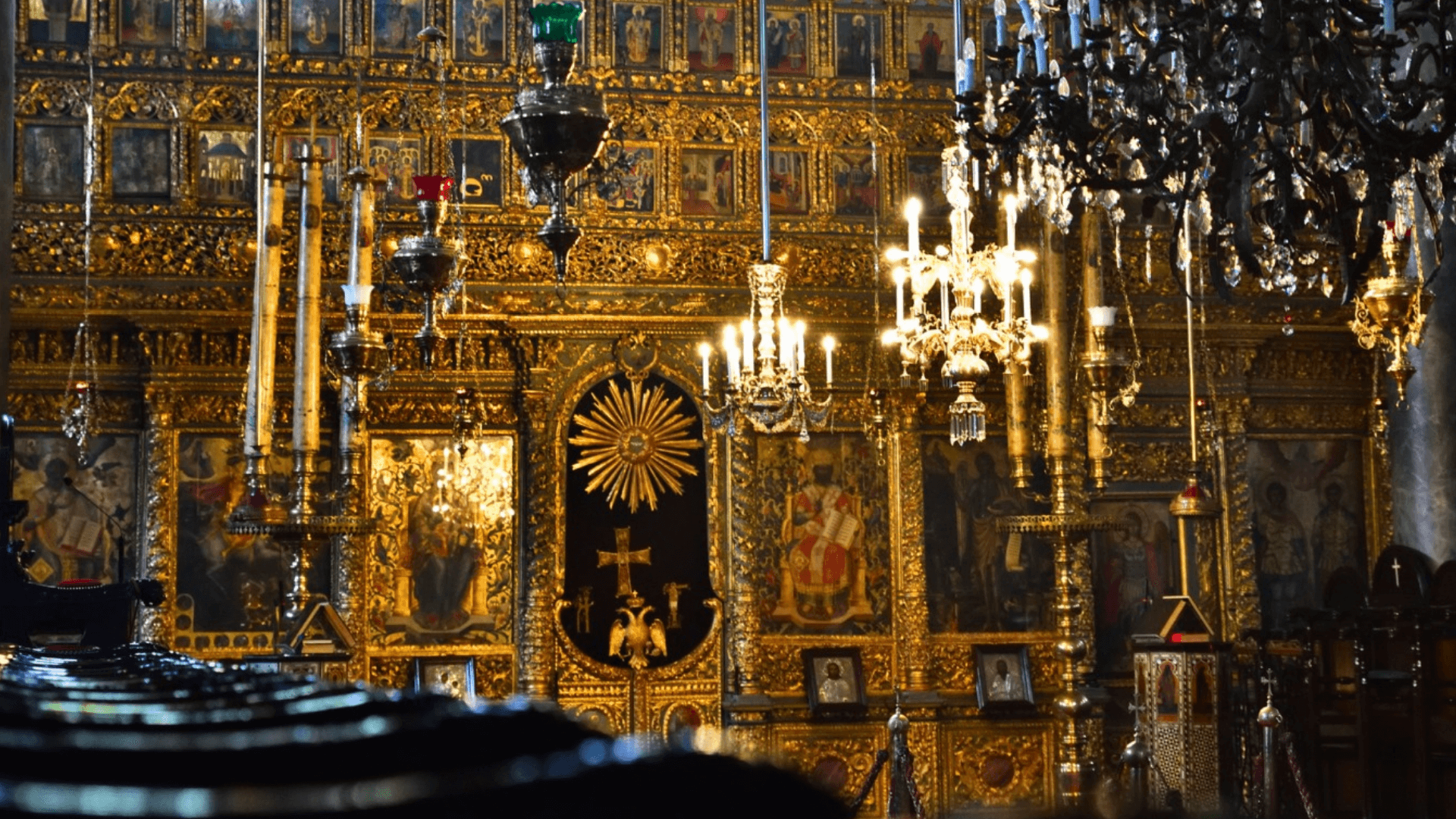Sultanahmet Mosque History and Story
Dominating Istanbul's skyline, the magnificent Sultanahmet Mosque, also known as the Blue Mosque, is more than just a place of worship; it is a symbol of the golden ages of the Ottoman Empire. Renowned for its stunning blue İznik tiles, this architectural masterpiece is worth visiting for visitors to Istanbul. This mosque, often referred to as the Turkey Blue Mosque by travelers around the world, has become a symbol of Turkish culture and history. This article will delve into the history, story, features, and visitor information of the istanbul blue mosque.
Where Is Sultanahmet Mosque Located?
Where is the Blue Mosque located? The Blue Mosque is located in Istanbul's historic Sultanahmet Square, built on the remnants of the ancient Hippodrome, and is very close to Hagia Sophia. Its central location makes it one of Istanbul's most accessible and popular tourist destinations.
For those planning to visit, there is the answer for the question ‘does the Blue Mosque locate among other attractions?’ The mosque is conveniently close to several major sights, including the Hagia Sophia, Topkapi Palace, and the Basilica Cistern, all within walking distance, allowing tourists to explore the rich history of the area.
Which Airport Is Closest to the Blue Mosque in Istanbul?
If you are wondering which airport is closest to the Blue Mosque in Istanbul, the most convenient option is Istanbul Airport (IST). From there, you can easily reach the Sultanahmet area by metro, tram, or taxi. Alternatively, Sabiha Gökçen Airport (SAW) is another option, although it is farther from the city center.
When Was Sultanahmet Mosque Built?
‘When was the Blue Mosque built?’ You might wonder. It was completed at a time when the Ottoman Empire faced numerous challenges, yet the mosque stands as a symbol of both architectural brilliance and spiritual significance. The answer to ‘when was the Blue Mosque built’ is between 1609 and 1616. Commissioned by Sultan Ahmed I, the mosque was completed in seven years.
Who Built Sultanahmet Mosque?
The architect of the Blue Mosque Turkey was Sedefkâr Mehmed Ağa, a student of the renowned Mimar Sinan, and this work showcased his mastery.
Why Is the Blue Mosque Important?
As one of the most important examples of Ottoman architecture, the Turkey Blue Mosque is renowned for its striking six minarets and grand central dome. Its impressive dome, surrounded by six towering minarets and its interior decorated with beautiful blue İznik tiles, make it a unique architectural masterpiece. The mosque’s six minarets were controversial at the time, as only the Kaaba in Mecca had the same number. To resolve this issue, Sultan Ahmed I ordered a seventh minaret to be added to the Kaaba.
The Story of Sultanahmet Mosque
Sultan Ahmed, I ascended the throne during a difficult period for the Ottoman Empire. To restore the empire's prestige and encourage, he commissioned the construction of a grand mosque. Construction began in 1609 and was completed in 1616. The mosque became known as the "Blue Mosque" due to its interior blue tiles.
Features of Sultanahmet Mosque
The Blue Mosque, Istanbul is a true architectural wonder, with each of its features adding to its beauty and magnificence. From its towering minarets to its intricate tilework, the mosque stands as a testament to Ottoman craftsmanship.
- Six Minarets: A rare feature in the Islamic world.
- Blue İznik Tiles: Over 20,000 handmade İznik tiles adorn the interior, giving the mosque its name.
- Magnificent Dome: The 23.5-meter-diameter dome adds to the mosque's grandeur.
- Eight Secondary Domes: Surrounding the main dome, these secondary domes provide structural balance.
- 260 Windows: These windows illuminate the interior with natural light.
10 Interesting Facts About Sultanahmet Mosque
The Blue Mosque, Istanbul, stands as one of the most iconic and historically significant landmarks in the city. Known for its stunning architecture and rich history, it continues to captivate visitors from around the world. Here are some fascinating facts that highlight its cultural and architectural importance.
- Commissioned by Sultan Ahmed I.
- Designed by architect Sedefkâr Mehmed Ağa.
- Features six minarets.
- Adorned with over 20,000 İznik tiles.
- Dome measures 23.5 meters in diameter.
- Includes 260 windows.
- Located near Hagia Sophia.
- A top tourist attraction in Istanbul.
- A prime example of Ottoman architecture.
- Also known as The Blue Mosque Turkey.
Is the Blue Mosque Free to Visit?
Is the Blue Mosque free to visit? Yes, it is! The Blue Mosque Istanbul welcomes visitors without any entrance fee. However, it is important to note that there may be certain restrictions during prayer times. Visitors are expected to dress modestly and behave respectfully when inside the mosque.
To ensure a pleasant experience, be aware of the Blue Mosque opening hours, as they may vary due to prayer schedules. Is the Blue Mosque free during these times? Yes, but it is recommended to visit outside of prayer hours to avoid any disruptions and to fully appreciate the beauty of the mosque..
It is important to clarify to visitors if they have the question ‘is Hagia Sophia the Blue Mosque?’ which is a common misconception. These are two separate and distinct historical structures. Hagia Sophia was originally a church, later converted into a mosque, and now a museum, while the Blue Mosque has always been functioning as a mosque. Many tourists ask ‘’is Hagia Sophia the Blue Mosque?’ when they are in the area.
Hotels Near Sultanahmet Mosque
Numerous hotel options are available near the Sultanahmet Mosque. Many, such as the "Taksim View Hotel," offer accommodation in the area. These hotels provide easy access to the mosque, often within walking distance.





